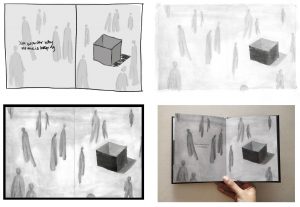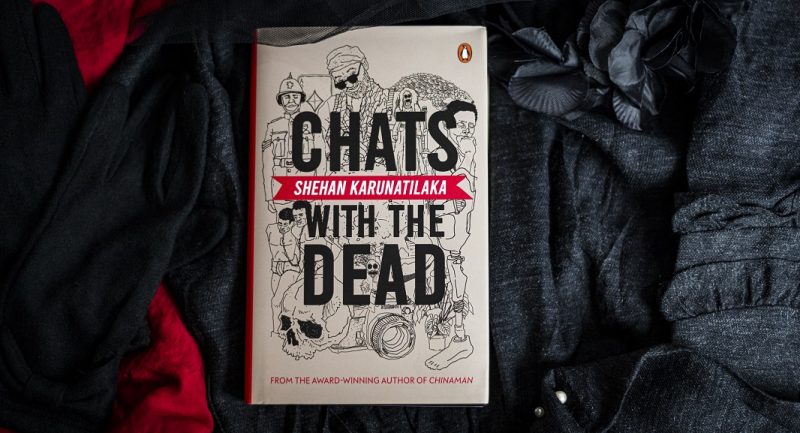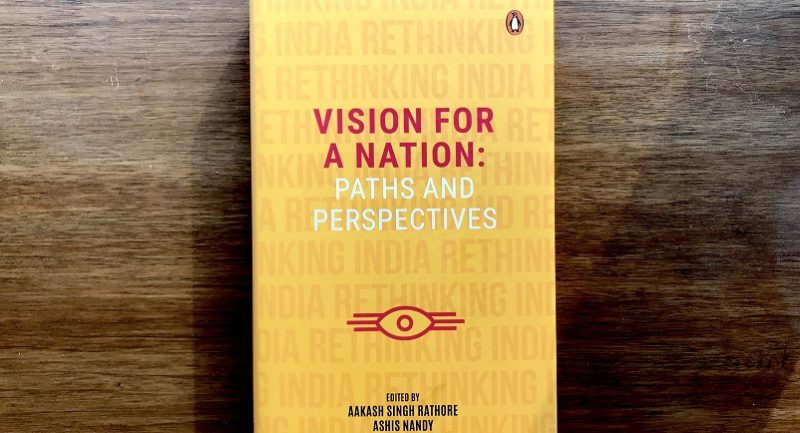
Inside a Dark Box is a simple book about what depression can feel like. When you get trapped in darkness, finding your way out can be a long and lonely battle, especially when the war is within your own head.
Today, we have with us Rujuta Thakurdesai, the illustrator of the book, who talks about her own experience of suffering from depression and what prompted her to take up the project of illustrating Inside a Dark Box.
By Rujuta Thakurdesai

Till about I was fifteen, I would call each and every negative emotion boredom. It may be anxiety, dullness, anger, agitation, sadness, missing, but I would just be ‘bored’. I was thought of as a fickle-minded and disinterested child. In reality, I never meant ‘bored’, but I just had absolutely no idea about how to convey these feelings I was experiencing.
Most of us belong to communities that don’t treat physical and mental wellbeing equally. We don’t talk about anxiety and heartbreaks as openly as we talk about indigestion and fractured bones. This leaves kids with no safe space to understand their minds or tools to diagnose themselves. “You are too young to understand this!” is not a true remark about mental health issues anymore. With changing societal structures, technology, violence and kids’ exposure to it, makes them as susceptible to depression and anxiety as adults.
The opportunity to work on creating this safe space to address these issues came to me in the form of Ritu Vaishnav’s Inside the Dark Box. Ritu had expressed her journey with depression in the form of a short piece reflecting emotions and a few doodles. She wanted to work with someone who had their own experience with depression and could relate to the writing in order to create visuals for it.
Our first meeting was not about discussing the illustration briefs and layouts like any other picture book but was mostly a very deep and personal conversation about our experiences and how our art (writing for her and for me, illustrating) helped us process it. We agreed that we wanted to create a book that would be a conversation starter rather than a how-to guide.

We focused on relatable and friendly yet dark and unsettling art style. Developing a character that has no gender, skin colour or cultural connotations made them just a human, representing all of us. The world around this character is a surreal space that can exist in one’s mind and doesn’t really have physical boundaries. As the book is also intended for kids and young adults, we never tried to dumb it down or overly simplify things. We both believe that kids are much smarter and emotionally evolved than we give them credit for. We created layered images that would evoke emotions every time you look at them.
We used darkness and light as the central metaphor to depict bleakness and hope. Banking on a simple concept like this that everyone can inherently comprehend, we made the story more accessible for all ages. The visual vocabulary used to express the angst in the scribbly ink strokes and calm of the whites is not really hard to decipher either.

Even though it was not easy to talk about my own experience with depression, it gave me deeper understanding and a voice to show what it means to be in the dark box.
The simplicity of Ritu’s writing makes the topic less intimidating and in a way her voice echoes that little voice in your head, making it so much more relatable. Our journey from words to rough thumbnails and then rendered artworks was focused on highlighting the discomfort felt by someone going through a mental illness and creating situations in the book that would resonate with you. The book is one of the most seamless mediums to discuss the delicate topic of mental health. It gives you the freedom to pace it the way you want, interpret it in a way relatable to you and if it becomes too intense, you can close the book and take a breather to open it again and find something new you didn’t see before.









